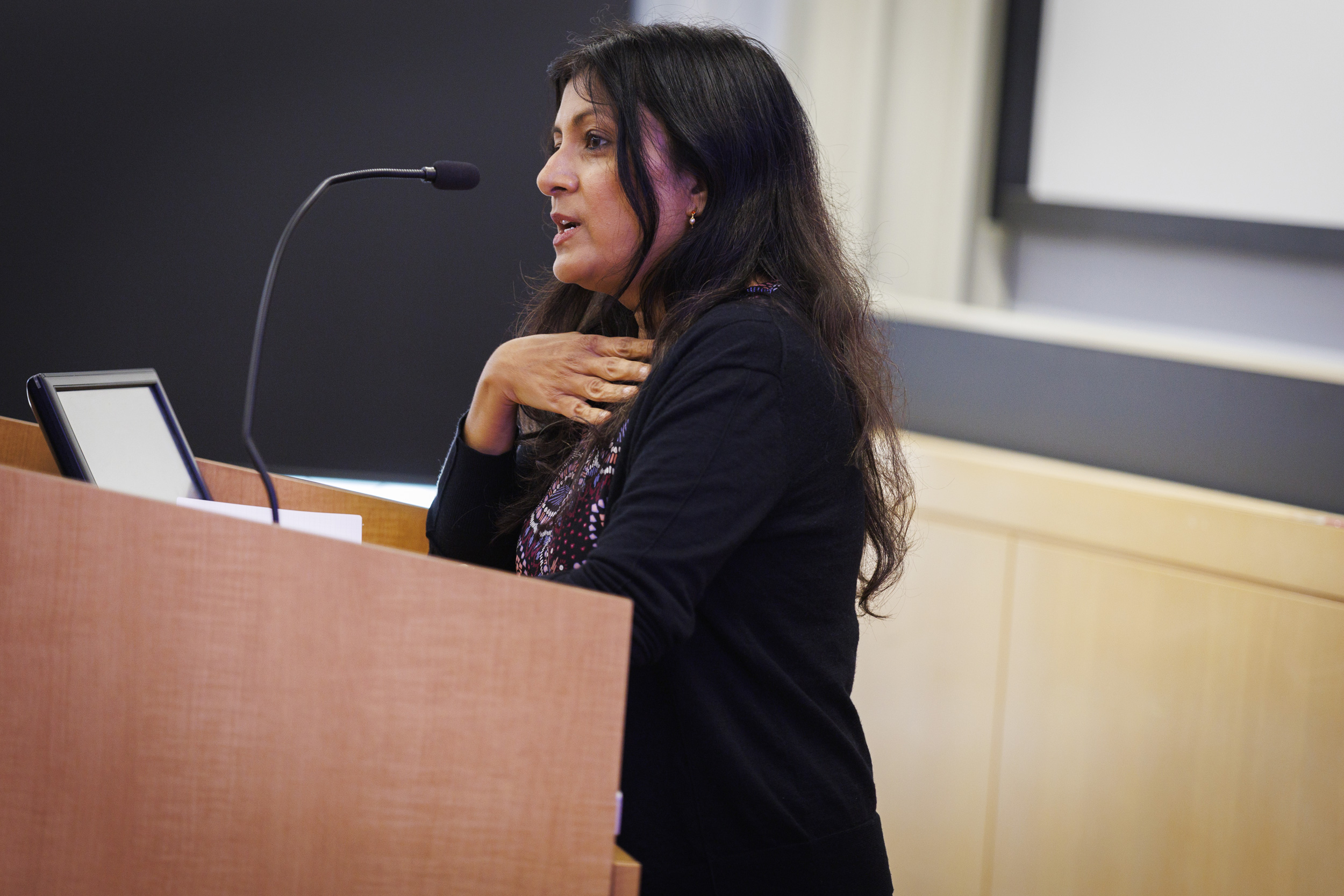How federal missteps opened door to COVID misinformation

“It was an experience for me, unusual in science journalism, where you have to be the watchdog for these public health agencies,” said NYT reporter Apoorva Mandavilli.
Stephanie Mitchell/Harvard Staff Photographer
Anti-vaxxers, others benefited from mistrust engendered by early stumbles in messaging about virus, prevention, reporter says
Federal agencies helped set the stage for a wave of COVID-19 misinformation and conspiracy theories about its origins through early missteps in messaging about the virus and control measures, stumbles that fueled public distrust and hampered government efforts, according to New York Times health and science reporter Apoorva Mandavilli.
For instance, public health agencies failed to speak clearly and in a timely fashion about how the virus could spread indoors, Mandavilli said in a talk sponsored by the Harvard T.H. Chan School of Public Health’s Center for Health Communication on Wednesday afternoon. Officials initially put more emphasis on hand hygiene rather than masking and erred in communicating candidly about the vaccines and side effects. Anti-vaccine activists used all of that to their advantage.
“The lack of honest conversation has undermined trust in public health,” said Mandavilli. “Whenever there’s silence from the public health agencies on the topic, that’s when misinformation gets in, and suddenly, it’s difficult to counter that message because it’s simple; it gives you easy answers; it’s memorable. And once it gets in there, it’s hard to get rid of.”
A journalist with a master’s degree in biochemistry, Mandavilli joined the Times in May 2020, and covered the pandemic as it was unfolding. She talked about the pressure felt by health and science journalists to cover the story following the script of public health agencies and how it changed their relationship forever.
“Just like reporters who report on politics have to hold politicians accountable, science journalists have to hold scientists accountable and public health agencies accountable,” said Mandavilli, whose reporting put pressure on the World Health Organization to acknowledge in July 2020 that the virus can linger in the air indoors and be transmitted that way.
It took a few more months for the Centers for Disease Control and Prevention to acknowledge that. In October, the agency announced there was a “potential for airborne spread of the virus that causes COVID-19.” The slow responses from both agencies to follow the science left her distraught.
“It was an experience for me, unusual in science journalism, where you have to be the watchdog for these public health agencies,” said Mandavilli. “We sort of more or less believe what the CDC and WHO said, and all of a sudden, we were in a situation where we had to really question everything we were hearing.”
To improve trust in public health agencies, officials must have a clear and accurate communications strategy to encourage cooperation and head off rumors and suspicions, said Mandavilli. Leaders should also acknowledge what went wrong with their messaging last time and be more transparent and forthcoming about the information and data they have.
And they could take some important lessons from the anti-vax movement, she said in response to a question from a student in the audience.
“They knew to get the information in early,” she said. “They’re excellent at making it easy to understand; they use bite-sized points, memes, and things that people can really retain. They use social media very well. One thing I kept seeing over and over is that the government was absent from social media.”
In contrast, Mandavilli, said the anti-vax campaigners “were loud. And they were clear. And they had all the answers.”




